S02 Episode 6: Hot Dry Noodle Takes
Pizza dough radicals + The secret history of Shaxian Foods + “a very sad flowchart” + the Chongqing noodle gentrification theory
In the house this week: Yan, Zoe, Jason, Krish, Tianyu, Lisha, Aaron, Caiwei, Jaime, and Simon.
Tianyu: Happy Year of the Tiger! Let’s talk about food.
Krish: Our two stories this week are about the everyday life of Chinese food, and how malleable, inclusive and wonderfully creative local adaptations of national food cultures can be. Too much of writing about Chinese food in English gets tangled up in issues of “authenticity,” and the subjects of both our stories resist definitions of the authentic so fiercely that the word might as well be useless.
Jaime: Authenticity is for nerds.
Krish: First, Yan goes into an internet rabbit hole to find Tahini-Linguine Hot Dry Noodles.
Meanwhile Zoe writes an ode to Shaxian Delicacies—China’s best drunk food staple.
Neither would feature in any traditional depiction of Chinese food, but I always think of this perfect parody of A Bite of China where the making of instant noodles is an epic adventure:
Food cultures are sustained by everyday adaptation and sharing, what the writer A.K. Ramanujan calls “an infinite use of finite means.” On the social platform Xiaohongshu (小红书, also known as Red), Yan discovers sharing that resembles a form of homesickness mutual aid:
Putting the Hack in Hakka Noodles
By Yan Cong
Yan: It all started with pizza dough.
I was scrolling through my feed on Xiaohongshu, my go-to Chinese social platform for life hacks, or more specifically, recipes for Chinese dishes created by and for overseas Chinese. A photo of youtiao popped up. Beneath it the headline read, “Newbie friendly! Make delicious youtiao with pizza dough.”
I was shook. I’ve never associated pizza dough with youtiao. I’ve never associated pizza dough with anything other than pizza.
Since I moved to Amsterdam last September, I’ve been consuming Xiaohongshu as a sort-of productivity/home decor/inspiration blog. Although it is known as a platform full of fashion influencers who help sell clothes and cosmetics to a predominantly female user base, small niches have emerged in its culture that encourage all kinds of sharing: from “10 IKEA products every home should have” to “5 tricks that help you to write a literature review in an hour.” A news story pointed out that parts of Xiaohongshu resemble TripAdvisor or Wirecutter. A podcast even called Xiaohongshu the Zhihu (a male-dominated Chinese equivalent of Quora) for women.
Using Xiaohongshu feels a bit like playing with the bastard child of Instagram and TikTok: photos and videos show up on my “Explore” feed in an endless scroll. From my experience, it seems like the Xiaohongshu algorithm is a bit smooth-brained: it just doubles down on content you’ve shown any interaction with. So my pizza dough encounter opened up an entire genre of cooking among overseas users on Xiaohongshu that had been unknown to me: Ingredient Substitution (食材平替).
My feed was never the same again. I'm now obsessed with the genre.

Imagine you’re a Chinese student living abroad. You’re on a limited budget, and your access to ingredients is limited. Pandemic and supply-chain restrictions mean care packages and trips home are impossible. The food you’re craving isn’t “restaurant food” but rather regional specialties or niche, home-cooked dishes.
Enter 食材平替, “Ingredient Substitution.” The classics of the genre represent people’s diverse daily cravings that a regular Chinese restaurant can’t fulfill, existing at the venn diagram intersection of “cheap”, “possible” and “satisfying.”
Before we dive into its three sub-genres, follow the flowchart and see which category you fall into:
Lazy/busy cook’s compromise - Pizza dough for youtiao/baozi/xianbing
Pizza dough embodies the first school of thought behind ingredient substitution: maximizing taste with a minimum amount of time and effort. A purist may frown upon this style of cooking, but it’s the perfect solution for people who don’t want to, or don’t have the time to, get their hands dirty. Pizza dough saves you the trouble of measuring flour and water, getting all the wet bits off of your hands when mixing the dough, and hours of waiting for a dough to rise. You speedrun the process by getting it ready-made in a grocery store.

Cooking with pizza dough also takes speedrun’s underlying logic: it requires imagination and an understanding of the object at hand in order to take advantage of it. Like speedrunners exploiting common bugs in game design, Xiaohongshu users take advantage of pizza dough as a premade mixture of flour, water and yeast, and repurpose it for making any flour-based dish.
I’ve made Beef pancakes and Shengjian Bao with pizza dough following recipes I found, and both attempts were successful. The outside was crunchy and golden, and the stuffing juicy. They weren’t perfect—I wished the dough had risen a bit more to give it a fluffy texture on top of the crunchiness, but they did the job. 8/10 would dough again.
Caiwei: This is the same “decompose rearrange” shit Chinese cooking (especially baking) enthusiasts have been seeing for a few years—I think essentially a result of China's yet undeveloped food industry, and also caused by a disparity in shared knowledge on food, especially when it comes to pastries. A good example is using ready-to-eat shou zhua bing (手抓饼, often translated as “pancakes” but come on it’s a paratha and even Jay Chou knows) dough to make Palmiers or egg tart crust. You cannot buy puff pastry at Chinese grocery stores, but you would have better luck finding frozen shou zhua bing even at the store in the smallest Chinese town. The substitution is amazing and uniquely diasporic because it takes knowledge from both food culture and a good amount of reverse-engineering/code-cracking, and reveals this deep resonance between cultures remote to each other, which I find beautiful.

Radical substitution - Sauerkraut vs. Suancai; Tahini vs. Hot Dry Noodles
Yan: Radical substitution has the most “fusion” potential. I call it radical not because it dramatically changes the cooking process, but because it’s the most adventurous and creative sub-genre in breaking boundaries between ingredients and national borders, challenging people’s preconceived idea of cuisine-specific ingredients.


Sauerkraut can be remixed as suancai (酸菜) in dishes from northeastern China. Tahini can be appropriated as the main component for the sauce in Hot Dry Noodles (热干面), a Wuhan signature. Can’t find alkali noodles for authentic Hot Dry Noodles? Use Linguine for similar taste and texture. Miss midnight snack 烤冷面? Use Lasagna to recreate the infamous street food.
Here’s a hilarious example of the same principle applied to cooking equipment: when you have friends over to make dumplings together but have only one rolling pin, use wine bottles or bowls!
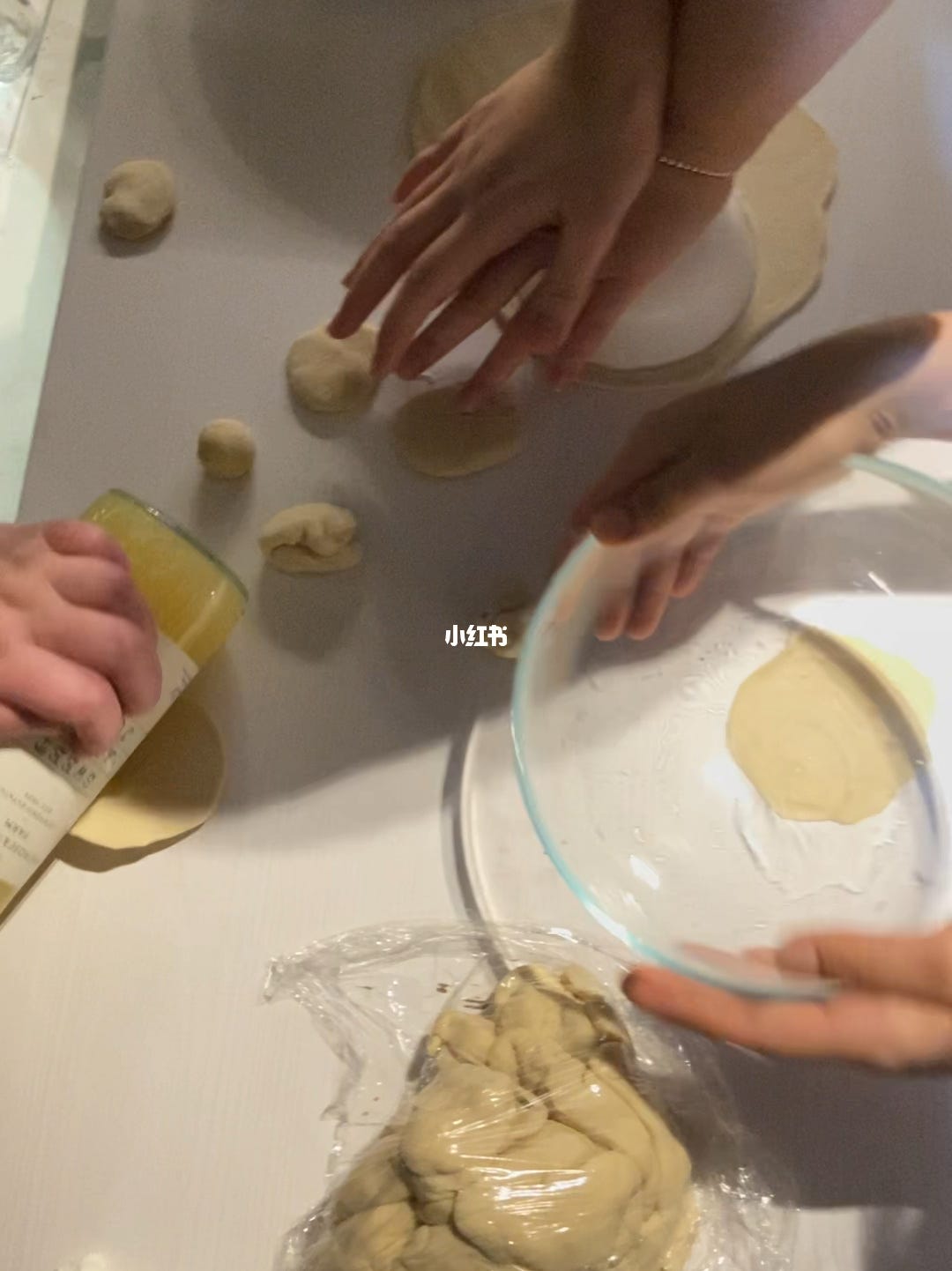
Reverse engineering - Making tudoufen from scratch
This last subgenre of cooking is the opposite of the first one: instead of taking a shortcut, it takes a detour. When ingredients hard to come by are not easily substitutable, or when a purist is craving for an authentic bite of their favorite dish, it’s possible to make some ingredients from scratch.

This accidental crossover with “slow food” does require more awareness of the ingredients themselves. It’s important to note that this kind of “first principles” thinking can be quite radical for casual cooks. Before I read the tudoufen (土豆粉, potato noodles) recipe from Xiaohongshu, it’s just a product I buy from dried food shelves in Asian groceries. I never thought about what it is made of, and how it is made: Mix potato starch with water and hit it up. Stir the mixture until it turns into a dough. The rest of the process is the same as making noodles.
Another advantage with this style of cooking is that it can be super cheap! As this recipe brags in the headline, “enjoy tudoufen at home for 75 cents!” With the global supply chain crisis, food products shipped from China are getting expensive—if you can even find them at all. If you’re a broke student who wants to save money, this is for you.
I can’t stop thinking of what Xuandi wrote in his senior fashion story in Season 1 last year. Influencers on Xiaohongshu usually want to sell you something, turning everything they touch into “derivative and banal” facsimiles. It is the opposite with Ingredient Substitution recipes: when specific products are mentioned, I never feel I was being sold something. I feel reassured that someone has tested it and successfully made a dish that I will one day make myself. Like senior fashion, they are creative yet unassuming: they aren’t monetizing their visibility or preaching shallow multiculturalism or in-your-face globalism. They’re not weaponizing nostalgia, but rather using it as an act of care, a way to feel more grounded wherever they may be.
At the end of the day, Ingredient Substitution is about living in a foreign country—adapting and getting by. Surviving and coping with the impossibility of going home. When I see a recipe being replicated, modded, or speedrun, I don’t see them as copycats trying to capture traffic and boost follower counts on Xiaohongshu. I see them as people who, in search of the old and familiar, have created something new.
Aaron: The exact same thing that happened to Yan has happened to me since I moved back to the US from Beijing late last year. Xiaohongshu is convinced that I’m a Chinese student living abroad instead of the 30-something white American that I actually am, and has delivered me a steady stream of Ingredient Substitution recipes since I demonstrated my interest by clicking on one of them.
Instead of Tesco tahini though, Xiaohongshu users in the US are particularly obsessed with Costco and Trader Joe’s, plus the occasional posts about Whole Foods. It’s been interesting for me to see, and has led to me using the app way more here than I ever did in China. In China, I’d find myself hate-browsing Xiaohongshu only if I was bored, but in the US I actively look forward to seeing the creative ways in which people can recreate the taste of home. It really does feel like a better, more creative version of Xiaohongshu. Now I just need to decide which one of these ten recipes for using Trader Joe’s uncured Black Forest Bacon as a Hunan la rou substitute I should actually cook…
Simon: In one sense Xiaoshongshu substitution cooking might just be the latest iteration of a longer process of the adaptation of food (foodways?) through immigration, itself speaking to the specificities of current patterns of migration. Subbing sauerkraut for suancai sounds fairly similar to the types of improvisation that created Chinese-American food. What might be different now is the class of the people doing this cooking, and, for some of them, the temporary nature of their sojourns outside of China. Will this become part of global Chinese cooking, but stay as a subculture for students, or is someone going to open a beef pancake place in Amsterdam that takes surprising cues from pizza and pide?

As a foreigner that’s spent a significant chunk of my life in China, I can relate to Aaron’s feeling of missing the flavors of a home that is not your home. One of my favorite foreigner-oriented media outlets in China is actually the YouTube channel “Chinese Cooking Demystified,” which I admit to binge watching and cooking from when I want to do something engaged with my surroundings, but also switch off the second-language part of my brain. Yet this is also strange, because part of the channel’s allure is about teaching you how to make inaccessible regional speciality/restaurant dishes while out of China—perhaps I am mentally preparing myself for departure… Anyway, I think they do a good job breaking down some of the differences between restaurant and home cooking, and actually have a video on making Shaxian Delicacies’ iconic peanut noodles. I have crisped green onions in lard to make it, which is pretty funny considering there is a Shaxian Delicacies 50 meters from my house. Imagining cooking it outside of China speaks to the power of nostalgia and distance, where something absolutely ubiquitous and mundane becomes alluring…
Tianyu: Speaking of Shaxian, the restaurant chain that’s everywhere in Chinese cities…no one really knows who owns it or how many of them are knock-offs. I don’t remember the exact details of my first (helplessly intoxicated) visit to Shaxian in Fuzhou. I recall that the beef noodle soup that I had ordered was extraordinarily cheap, and while I struggled to actually find beef in it, I was too drunk to complain.
There is a collective diaspora craving for Shaxian Delicacies: the idea of affordable, pan-Chinese dining that opens until late night. The food doesn’t have to be good, but it would be nice to know there is one around the neighborhood. I recently encountered (with fellow Chaoyang Trap resident Henry Zhang) a Shaxian Delicacies in Sunset Park, Brooklyn. We didn’t go in because we had just had lunch, and we weren’t sure if it was shanzhai. In any case, it was soothing to reunite with the red-and-green Pac-Man logo.
For our second story this week, Zoe pays tribute to the Shaxian cult with her trademark combination of gonzo, immersive, investigative and method journalism:
Shaxian Can’t Be Fucked With
By Zoe Mou
Zoe: It’s 3 AM and you just came out of a live music show, craving late night comfort food to wrap up your epic night out. Chances are, you’ll see a Pac-Man like logo on the street corner and chomp your way to it. Instead of an action maze chase video game adventure, you will experience the slightly surreal essence of Han Chinese cuisine.
沙县小吃 (“Shaxian Delicacies”) is the most culturally invasive Chinese restaurant brand in the whole world, truly the Shen Yun of snack joints. I’m telling you- there are at least three Shaxians in Brooklyn, including a knock-off. It’s not as flamboyant as Laoganma, the Chinese chili oil that has stormed American dining tables, but Shaxian Delicacies has quietly taken over countless shopping streets and urban walking routes, pervading your life by opening right next to your apartment compounds.
1873 results for Shaxian locations on Dianping, and this is just Beijing.
Shaxian Delicacies started out in Shaxian, aka Sha County, a district of Sanming in Fujian province. While a mostly typical southern cuisine, Shaxian food features surprising fusion with northern flavors. This is part of the reason why Shaxian Delicacies have become so popular all over the country, unintentionally creating a pan-Chinese palate. The food culture of Shaxian and other places in Fujian benefited from the two waves of migrations from the Zhongyuan region (roughly Henan, Shaanxi, and Hebei) down south, during which a large number of northern Han Chinese poured into Fujian, bringing the food culture of the north to Shaxian and other places in the South.To a lot of Chinese, it tracks as vaguely “representative”—capturing a kind of essence, the profundity of Chinese food culture (but not entirely).
Shaxian is my favorite drunk food—very much like dollar pizza on 6th Ave, mostly because they both open after midnight and serve tasty carbs to drunk people. Another virtue of Shaxian (and dollar pizzas) that I highly appreciate is that they are truly hospitable dining spaces where everyone is welcomed - Shaxian is probably the most affordable restaurant food that you can buy. A warm bowl of wontons at Shaxian after work is the best treat for an Ele.me delivery driver. A broke college student struggling to support themselves can always get a sumptuous dinner at Shaxian Delicacies. And you can also spot well-dressed salarymen sitting at a dining table in Shaxian slurping their piaoxiang noodles.
I remember reading a Douban post in which the OP only had three kuai left in their pocket. Cold and starving, not knowing where to go, they decided to go to a Shaxian. The owner of that Shaxian near their university generously offered to serve them more steamed dumplings for free and asked if they had enough money to make their trip back to campus. Shaxian to me is a hodgepodge that mixes social classes.
In front of a bowl of Shaxian dumplings, everyone is equal. Alright, I might have gone too far…
Shaxian Delicacies is key among the many things Mr. Xi has looked at, often during his tenure in Fujian. According to a Xinhua report, “Mr. Xi Jinping's care and support during his tenure in Fujian was the key to Shaxian Delicacies evolving into a worldwide industry coming from a tiny backwater town.” Apparently the then-vice party secretary of Fujian noticed the potential of the local food industry when he was visiting in 1999 and suggested the major attraction of Shaxian was cheap and cheerful, spotting the “lower consumption market.”
In the early 1990s, thousands of people left their hometowns to make a living in the catering industry. This coincided with the wave of ‘Xiahai’ 下海, which led to a surge in the urban migrant population and its demand for food, accommodation and travel. The affordable price of Shaxian Delicacies grasped the hearts and tummies of the low consumption residents.
This is on-point. Apart from this apt analysis, I also want to share this hot take from Shaxian locals:
In the eyes of Shaxian people, Bianrou 扁肉 (a type of Fujianese dumplings) are ‘bricks’, and Ban Mian 拌面 (Fujian-style stirred noodles) are ‘steels.’ The local street food has been built into the skyscrapers of Shaxian.
This description of Shaxian food somehow sounds very earthy and “industrialized,” but I assure you the food served at Shaxian Delicacies is generally quite excellent. My favorite is “Fragrant Stirred Noodles 飘香拌面.” It comes coated with soy sauce and peanut butter (unsweetened), sprinkled with a bit of salt and sugar, and garnished with a pinch of chopped spring onions. Give it a solid stir to evenly mix the seasonings with the boiled noodles, and our taste buds will be completely captured by this simple carb bomb.
As a curious human being, I assume that people must be very curious about the ownership of this restaurant brand. Owning thousands of branches in China and abroad, Shaxian’s owner must be a millionaire. I tried to do some research about this mysterious brand, not expecting to hit the wall at the first step—even the official website of Shaxian Delicacies doesn’t work. Typical Shaxian style. But deep diving into all public records about the brand, finally something much clearer has emerged.
Shaxian was initially a collective run by locals from Shaxian. During the early 90s, Shaxian locals flocked to southern coastal cities to sell street food. Seeing their peers raking in money in the big cities, fellow villagers smelled the profits from the burgeoning catering industry and followed the army of Shaxian street food vendors, starting to open more restaurants selling Shaxian food in the cities. Everyone just unconsciously adopted the name Shaxian Delicacies. As its reputation grew, non-Shaxian locals also began to emulate their recipes and further expanded the brand's influence all over China and even abroad. This also explains why originally Shaxian Delicacies were only managed by Shaxian locals, but nowadays we do see quite a lot of non-locals running them.
Please don’t ask me how they came up with the Pac-Man like logo. I have not yet gotten to the end of that investigation.
Simon: I had heard previously that there were a lot of Henanese migrants in Fujian, but I hadn’t really thought about that in terms of it creating a kind of north-south fusion cuisine in Shaxian, which is super interesting. Zoe, recently you mentioned to me that you’re starting to notice less Shaxian Delicacies, which makes me wonder if it’s a sign of China growing out of the “lower consumption market” that creates the need for it. I remember reading an article a few years ago about how growing prosperity (as well as delivery services) were killing off instant noodle sales in China. What might replace Shaxian’s supremacy at home? Maybe the much discussed luosifen fad of the past few years might demonstrate more cosmopolitan palettes, a search for the exotic and new (within national borders) rather than the comforting?
Also, as a *闽 Appreciator* I’d be remiss to not mention my minor beef with Shaxian Delicacies: by completely cornering the lower end market, it makes it very hard to find Fujianese food around China that isn’t either dirt cheap or in a super expensive seafood restaurant. In Beijing at least, it’s only been in the past few years that mid-range restaurants offering (excellent) food from Xiamen and Quanzhou have opened up.
Krish: Outro music this week is the double bill of:
1/ Simon’s ‘What’s the Point?’ show on BAIHUI, followed by;
2/ This hour-long “GO GO ROUND THE FISHMANS” mix by friend of the newsletter Hayley, featuring everyone’s favorite Japanese psych rocksteady trio.
Tianyu: Thank you for reading! Please share, subscribe, and tell us about your ingredient substitution ideas via email (hello AT chaoya.ng) or Twitter @ChaoyangTrap.
Yan Cong experiments with Ingredient Substitution recipes from her home kitchen in Amsterdam.
Zoe Mou is trying to create a Shaxian-Guizhou fusion cuisine.
Jason Li is an artist who noodles and doodles.
Krish Raghav is no longer based in Chaoyang =(
Caiwei Chen misses her friends badly and wants to cook for them.
Aaron Fox-Lerner should stop compulsively saving recipes on Xiaohongshu and start actually cooking them.
Simon Frank believes that Lanzhou beef noodle restaurants are China’s Greek diners.
Tianyu Fang is an intern.







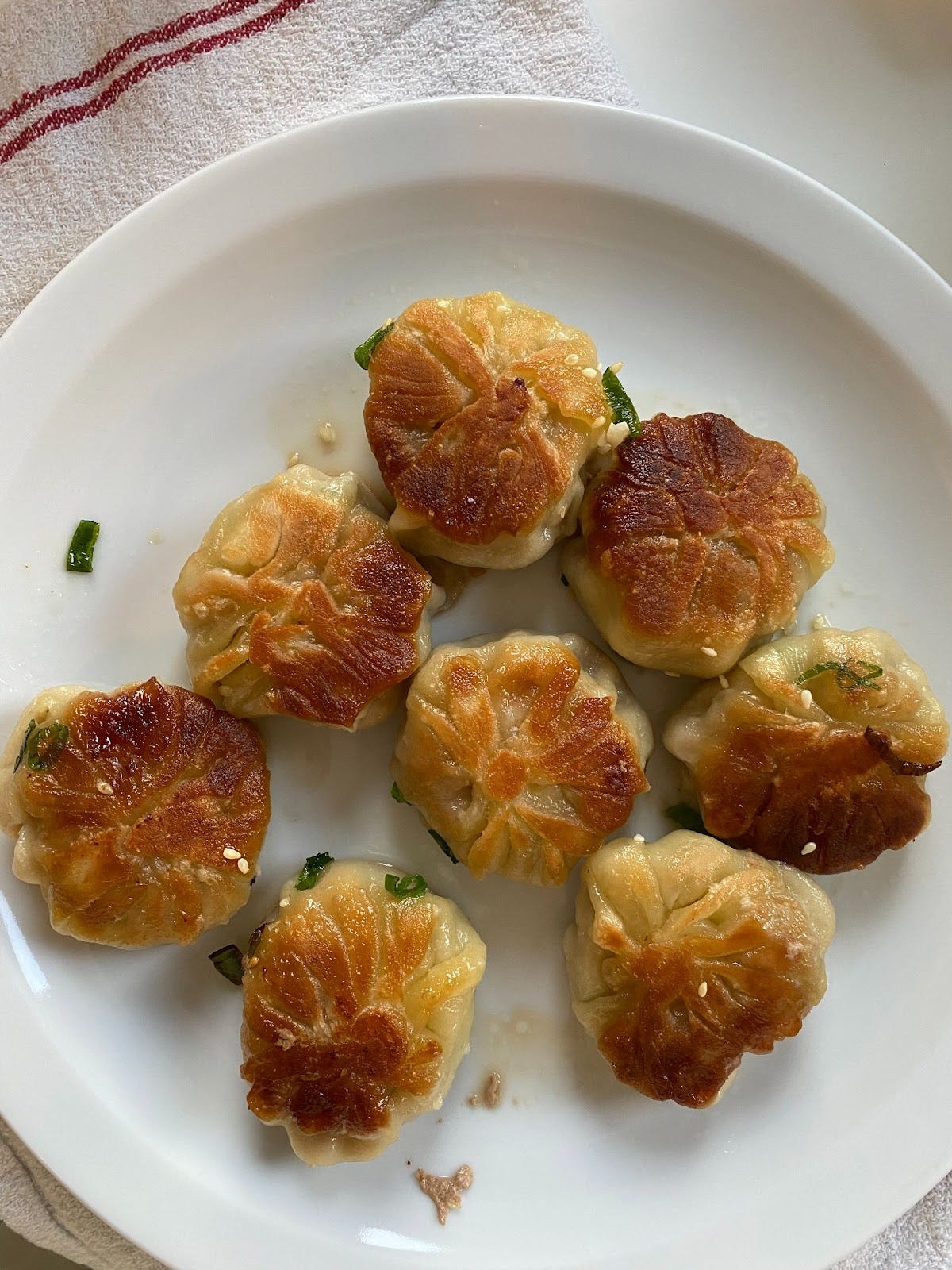
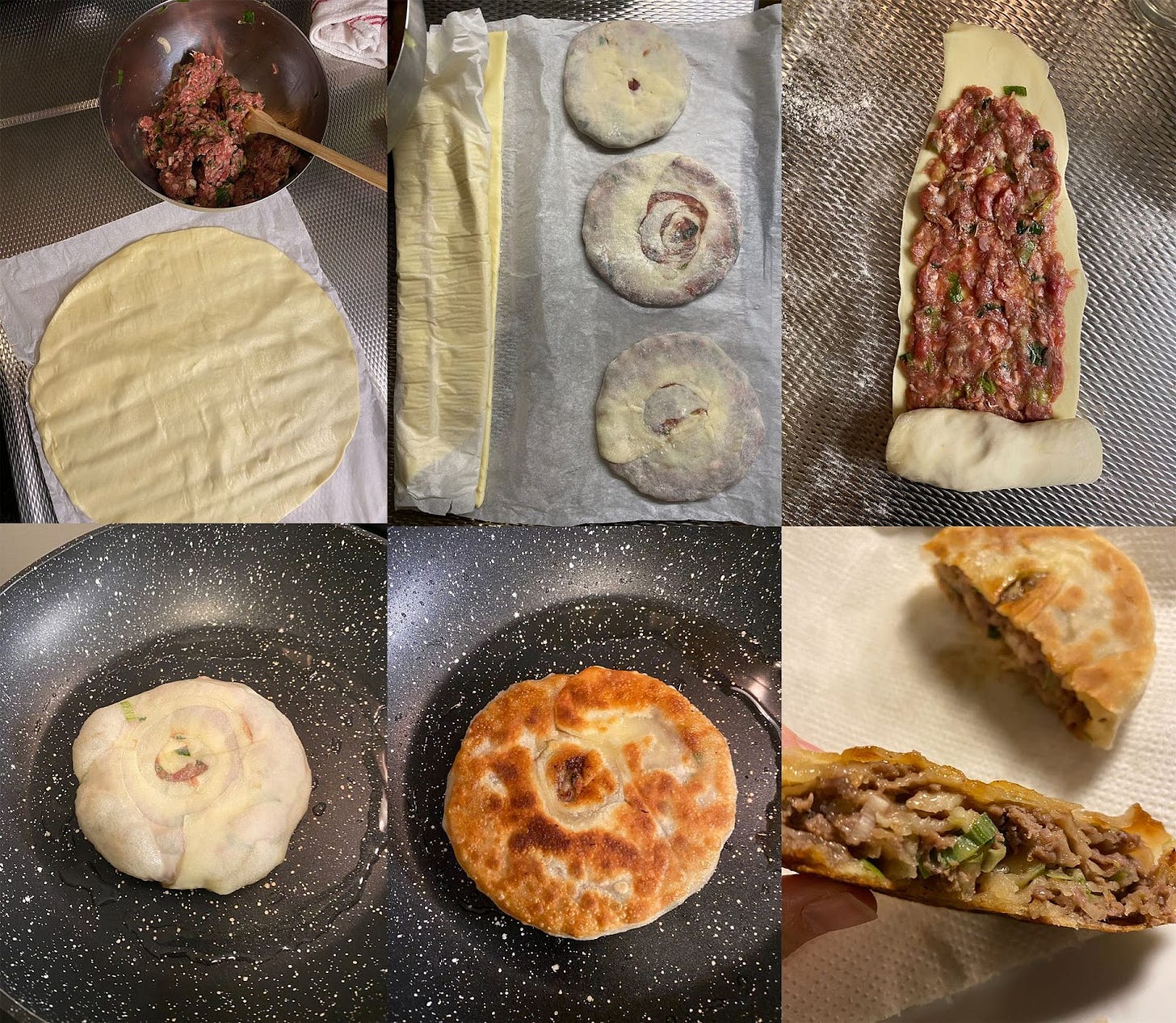
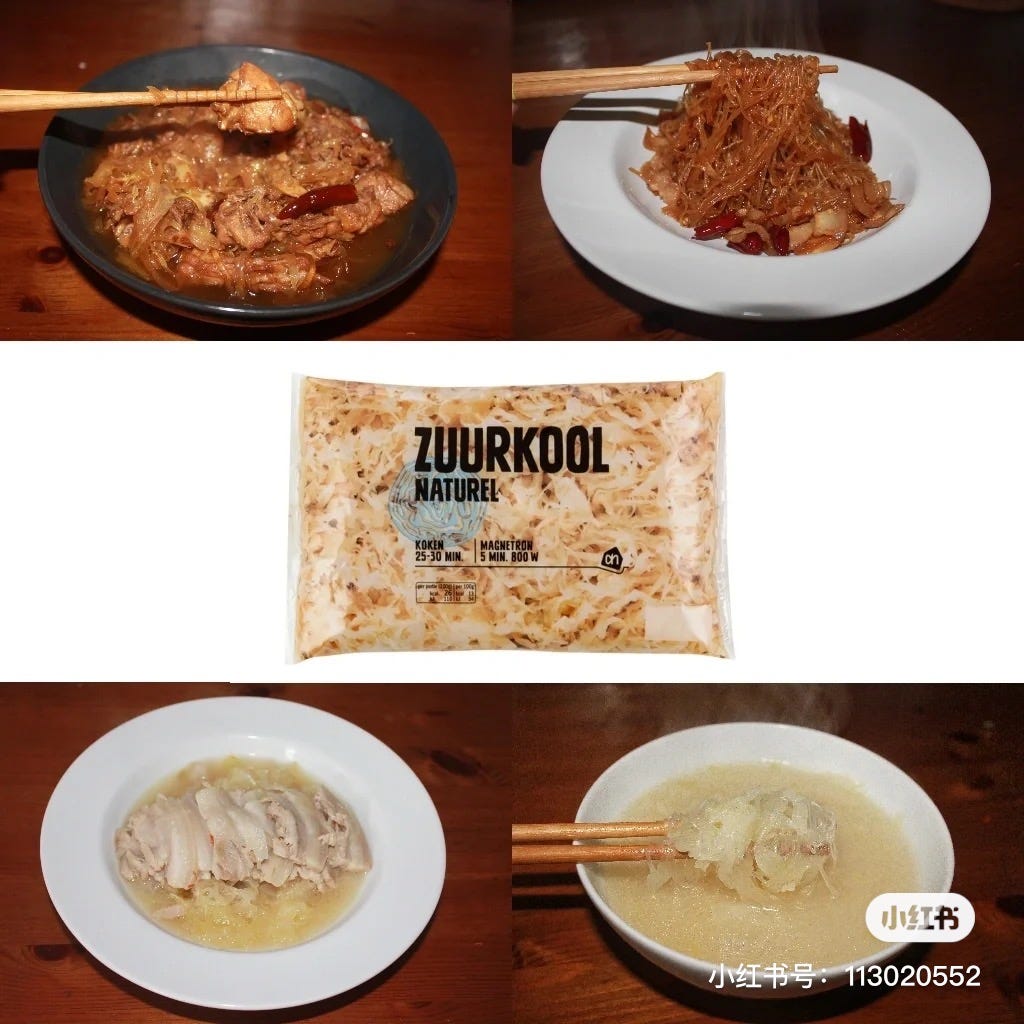




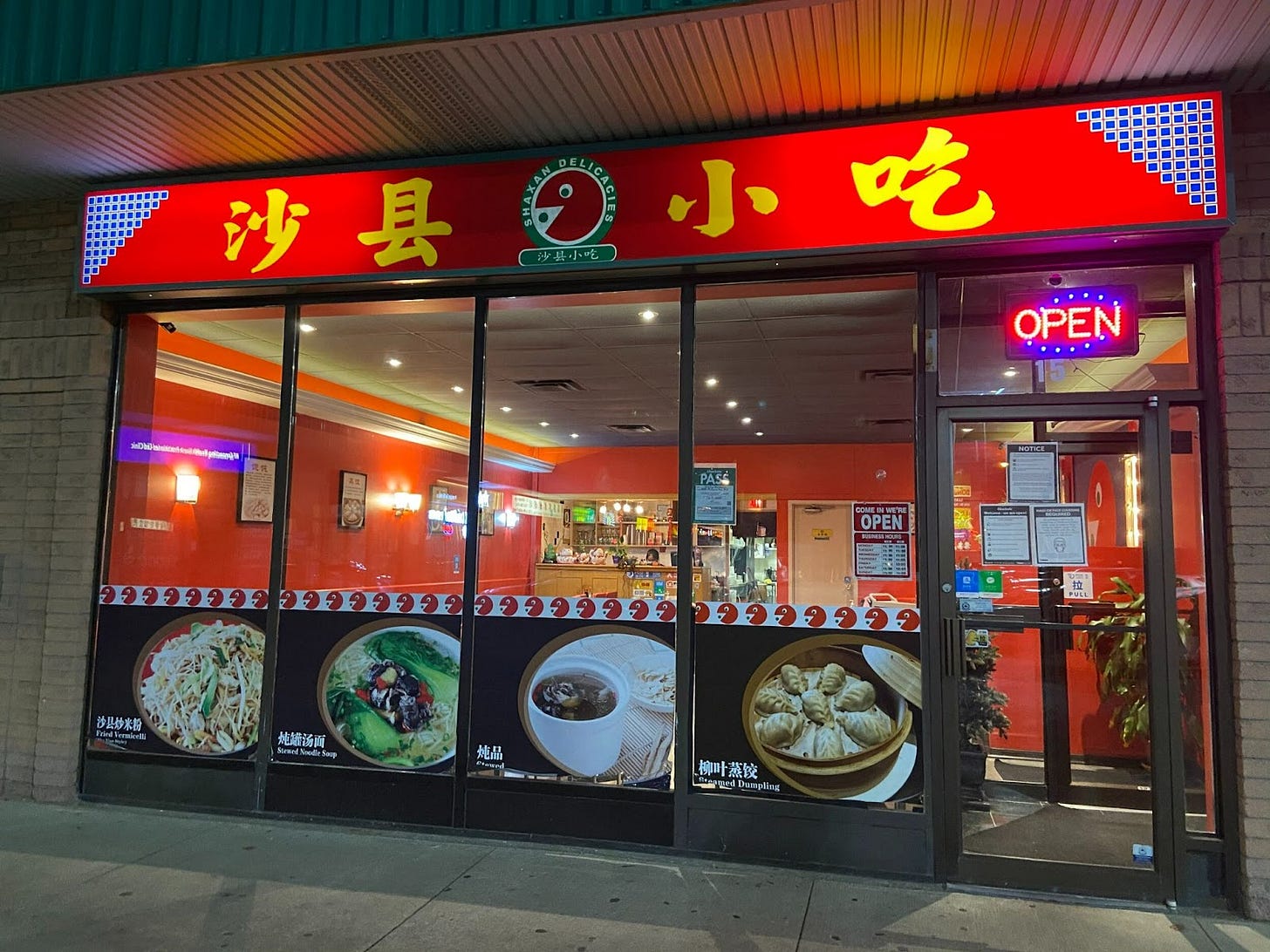




Late to the party, but really loved this.